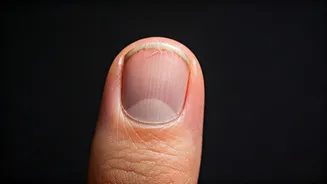Cavities: A Common Enemy
Dental cavities, also known as tooth decay, are a prevalent global health issue affecting individuals of all ages. These tiny holes in the teeth are the result
of tooth decay. Cavities are created by acid, which is produced when bacteria in the mouth break down sugars and starches found in food. This acid erodes the hard enamel surface of the teeth, gradually forming a cavity. Without proper treatment, a cavity can worsen, leading to toothaches, infection, and even tooth loss. Traditional treatments for cavities, such as fillings, can be expensive and time-consuming, and require multiple visits to the dentist. Furthermore, many people are anxious about dental procedures. Early detection and prevention are the best defenses against cavities. Regular dental check-ups, effective oral hygiene habits, and a balanced diet all play vital roles in preventing cavities and preserving oral health. This case study demonstrates that using technology may be one of the solutions in the future.
Tech's Dental Revolution
Smart technology is revolutionizing many aspects of healthcare, and dentistry is no exception. Advances in technology have introduced novel ways to diagnose, treat, and prevent dental issues. One such innovation is the use of smart technology to monitor and maintain oral health, potentially reducing the need for invasive and costly treatments. Innovative dental tools provide patients with real-time feedback on their brushing technique. They also offer personalized recommendations to improve their oral hygiene practices. This proactive approach helps people keep their teeth cleaner and reduces the risk of cavities. Furthermore, smart dental devices can provide dentists with more detailed insights into a patient's oral health, enabling them to detect problems earlier and formulate more effective treatment plans. This blend of smart technology with dental practice promises improved patient outcomes and reduced dental care expenses. This is a game changer for many people.
How It All Worked
This young woman, who had battled dental cavities her entire life, found a transformative solution through the use of smart technology. The specific details of the technology used are not provided. However, the core concept centered around the consistent use of innovative devices and strategies to maintain impeccable oral hygiene. This likely included incorporating features such as a smart toothbrush that provided personalized feedback on brushing technique and coverage. In addition, using an app to help in tracking oral health changes and compliance could have been helpful. This meticulous approach to oral care helped her proactively combat the causes of cavities. By actively monitoring and maintaining her oral health with the aid of technology, she effectively reduced the risk of cavities. The use of this smart technology enabled her to prevent the onset of new cavities and avoid the need for costly dental procedures.
Long-Term Benefits Realized
The application of smart technology brought many benefits. One of the primary advantages was the successful prevention of cavities. This was achieved through rigorous oral hygiene habits and continuous monitoring. The reduced need for fillings, root canals, and other treatments resulted in significant cost savings. The technology empowered the young woman to take greater control of her oral health, reduce anxiety around dental treatments, and improve the overall quality of life. The smart technology acted as a preventative measure, identifying problems early and allowing for timely intervention. This proactive strategy ultimately helped her save both time and money. This case underscores the potential of smart technology to improve dental health. This innovation offers a promising avenue to transform how we approach oral care in the future.











